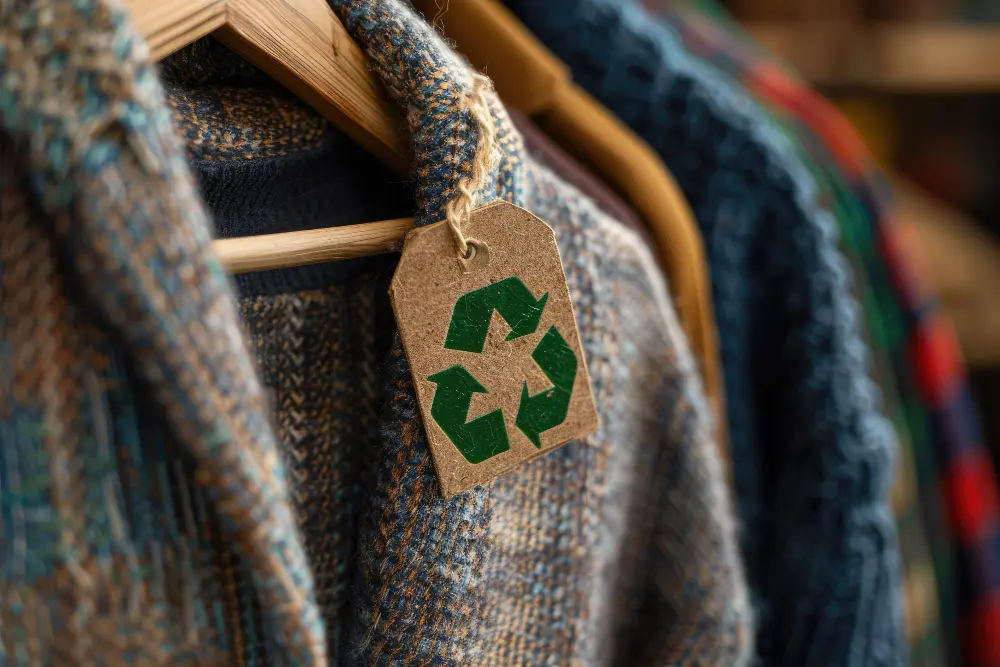
Sustainability is no longer just a trend—it has become a critical focus in various industries, especially textiles and apparel. As one of the most significant contributors to global pollution, the textile industry is under increasing pressure to adopt more eco-friendly practices.
Activewear, a rapidly growing fashion industry segment, is also evolving. With the rise of athleisure, there is a growing demand for stylish yet sustainable options. Designers and brands are exploring innovative fabrics that meet performance needs and reduce environmental impact.
What is Sustainable Activewear?
Sustainable activewear is crafted from eco-friendly materials like organic cotton, bamboo, recycled polyester, and Tencel. These materials help reduce waste and have a lesser environmental impact compared to traditional workout clothes made from polyester, nylon, and spandex, which can take hundreds of years to break down and often involve harmful chemicals.
Table of Contents
In addition to material choices, sustainability in the apparel industry involves a broader range of factors, including reducing CO2 emissions, addressing overproduction, minimizing pollution and waste, promoting biodiversity, and ensuring that garment workers receive fair wages and work in safe conditions.
As a result, choosing sustainable workout clothes offers several benefits: it lowers your carbon footprint, improves air and water quality, is gentler on your skin, lasts longer, and support ethical manufacturing practices. This blog explores six key fabrics shaping the future of sustainable activewear.
6 Fabrics Defining the Future of Sustainable Activewear
The term “sustainable” is now essential in the textile and apparel industries, which are significant global polluters. They contribute to textile waste, greenhouse gas emissions, and harmful chemical and plastic pollution. As consumer awareness of these issues grows, sustainable fashion, particularly in activewear, is gaining momentum. Athleisure is no longer confined to workouts but is becoming a staple of everyday wear. More designers are focusing on creating stylish sportswear with eco-friendly fabrics.
Here are six materials that are making sustainable sportswear a reality, all of which Anoosha Apparel Sourcing (AAS) proudly sources and promotes:
1. Recycled Cotton
Recycled cotton, made from previously used cotton garments, offers the same benefits as conventional cotton but is much more environmentally friendly. Research indicates that recycling one ton of cotton can save up to 765 cubic meters of water. By sourcing and promoting garments made from recycled cotton, Anoosha helps conserve natural resources and reduce landfill waste.
2. Recycled Plastic
Plastic and polyester fibers are standard in sportswear for their breathability and durability. However, they are harmful to the environment. Recycled polyester (rPET) is made from plastic waste, such as used water bottles and ocean debris. Sourcing garments made from recycled plastic helps reduce carbon emissions and energy consumption, making sustainable sportswear more accessible.
3. Organic Cotton
Organic cotton is similar to regular cotton but with significantly less environmental impact. According to The Revelator, standard cotton production generates 220 million metric tons of carbon emissions annually. Organic cotton is grown without hazardous chemicals or pesticides, using non-GMO seeds and local labor. Due to its breathability and durability, it is ideal for sportswear. Anoosha Apparel Sourcing is committed to sourcing organic cotton garments to meet the growing demand for eco-friendly activewear.
4. Bamboo
Bamboo is a rapidly renewable resource with natural moisture-wicking properties, making it ideal for sportswear. It grows quickly without toxic chemicals, minimizing environmental impact. Bamboo fabrics are soft, durable, and comfortable, providing excellent performance in activewear. By sourcing bamboo-based garments, Anoosha offers brands a sustainable option that aligns with eco-conscious goals.
5. Cupro
Cupro, often considered the vegan silk equivalent, is made from cotton scraps known as lintels. It is popular in athletic apparel for its sustainability and luxurious feel. Cupro is elastic, hypoallergenic, and highly breathable, making it an excellent choice for sportswear. Anoosha supports brands in offering high-quality, sustainable activewear with Cupro-based garments.
6. Tencel
Tencel Lyocell is a cellulose fiber made from wood chips. It can be blended with other materials, such as bamboo, to enhance their strength, moisture absorption, and softness—critical qualities for sportswear. Tencel production uses significantly less water, chemicals, and energy than cotton or polyester, which is biodegradable. Anoosha is dedicated to sourcing Tencel-based garments to help brands create functional and environmentally responsible activewear.
Takeaway
These six eco-friendly fabrics are leading the way in the future of sustainable activewear. As consumer awareness of conscious purchasing grows, sustainable activewear will become more accessible and in demand. Anoosha Apparel Sourcing is committed to sourcing and merchandising garments made from these innovative fabrics, supporting brands in reducing their environmental impact while offering stylish and functional clothing options. The sportswear industry can significantly promote a greener future by focusing on sustainable fabrics.


